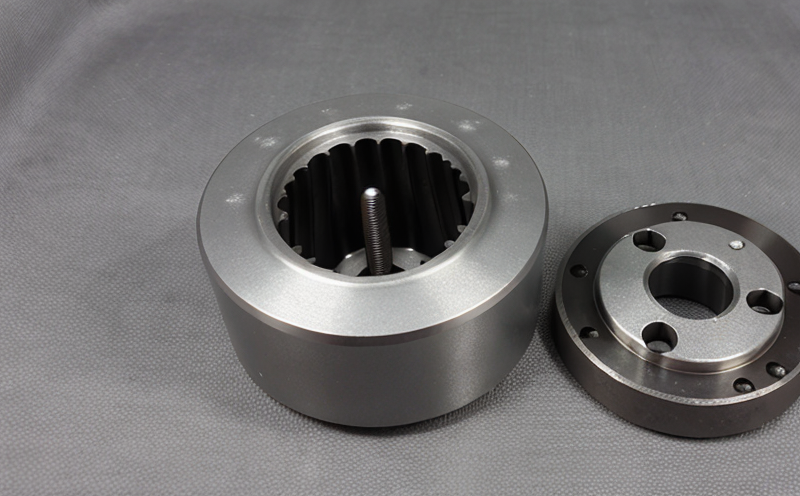ISO/ASTM 52900 Additive Manufacturing – General Principles
The ISO/ASTM 52900 standard provides a comprehensive framework for additive manufacturing (AM) processes, encompassing the design, qualification, and production of parts. This standard is particularly valuable in the powder metallurgy and additive manufacturing sectors where precision and reliability are paramount.
ISO/ASTM 52900 covers the general principles governing AM systems, materials, process parameters, and part characteristics. It outlines the steps required to ensure that the manufactured components meet the desired performance criteria, thus enhancing product quality and consistency. The standard is applicable across various industries including aerospace, automotive, medical devices, and consumer electronics.
The primary focus of ISO/ASTM 52900 lies in ensuring that AM processes are reliable and repeatable, leading to parts with consistent mechanical properties. This is achieved through detailed guidelines on material selection, process control, part design considerations, and quality assurance measures. Compliance with this standard ensures that manufacturers can produce high-quality components while maintaining regulatory compliance.
For powder metallurgy applications, the standard emphasizes the importance of selecting appropriate powders, ensuring proper mixing, and controlling sintering conditions to achieve desired mechanical properties. In additive manufacturing, it guides on laser parameters, layer thickness, post-processing techniques, and final part inspection methods.
The standard also includes acceptance criteria that specify how parts should be inspected and evaluated. This ensures that only high-quality parts meet the specified performance standards before being used in critical applications.
By adhering to ISO/ASTM 52900, manufacturers can enhance their product quality while ensuring regulatory compliance. The standard provides a robust framework for developing and validating AM processes, leading to consistent part production across different facilities and geographical locations.
The detailed guidelines provided in this standard are essential for R&D engineers, who need to design parts that meet specific performance criteria. Quality managers can use these guidelines to ensure that the manufacturing process is under control, while compliance officers can verify adherence to regulatory requirements. Procurement teams benefit from ensuring that suppliers adhere to these standards, thus maintaining consistent part quality.
The standard also addresses the challenges faced by manufacturers in achieving consistent part quality across different facilities and geographical locations. By providing a comprehensive framework for AM processes, ISO/ASTM 52900 helps overcome these challenges and ensures high-quality parts are produced consistently.
In summary, ISO/ASTM 52900 serves as a vital tool in the powder metallurgy and additive manufacturing sectors, ensuring that parts meet stringent quality standards. This standard is essential for manufacturers looking to enhance their product quality while maintaining regulatory compliance and consistency across different facilities.
Eurolab Advantages
At Eurolab, we bring extensive expertise in the field of metallurgy and material testing, ensuring that our services meet the highest standards. Our team of experienced professionals provides comprehensive support for ISO/ASTM 52900 compliance, offering a range of services to help you achieve your quality and regulatory goals.
- Expertise in AM Processes: We have a deep understanding of additive manufacturing processes, enabling us to provide accurate and reliable testing results.
- Comprehensive Testing Services: Our laboratory offers a wide range of testing services tailored to meet the specific requirements of ISO/ASTM 52900.
- State-of-the-Art Facilities: Equipped with advanced instrumentation and equipment, our lab ensures precise and accurate test results.
- Dedicated Team of Experts: Our team comprises highly skilled professionals who are well-versed in the latest testing methodologies and standards.
- Comprehensive Reporting: We provide detailed reports that include all relevant test data, ensuring complete transparency for your records.
- Regulatory Compliance: Our services help ensure compliance with international standards, thereby reducing the risk of non-compliance issues.
- Consistent Quality: With a focus on precision and accuracy, we deliver consistent quality in all our testing services.
- Customized Solutions: We offer customized solutions to meet your specific needs, ensuring that you receive the most relevant and valuable insights.
Choose Eurolab for comprehensive ISO/ASTM 52900 compliance support. Our team is dedicated to helping you achieve your quality and regulatory goals with precision and reliability.
Why Choose This Test
- Ensure Quality Compliance: ISO/ASTM 52900 ensures that additive manufacturing processes meet the highest standards of quality, ensuring compliance with international regulations.
- Increase Product Reliability: By adhering to this standard, manufacturers can produce parts with consistent mechanical properties, enhancing product reliability and performance.
- Enhance Reputation: Compliance with ISO/ASTM 52900 enhances your reputation as a leader in quality manufacturing processes.
- Reduce Risk of Non-Compliance: Ensuring compliance reduces the risk of penalties, legal issues, and reputational damage associated with non-compliance.
- Enhance Customer Confidence: Demonstrating adherence to international standards builds trust and confidence among customers and stakeholders.
- Facilitate Market Access: Compliance with recognized international standards can open doors to new markets and opportunities for growth.
In addition, this test provides a robust framework for developing and validating AM processes, leading to consistent part production across different facilities and geographical locations. This ensures that parts meet stringent quality standards while maintaining regulatory compliance.
Environmental and Sustainability Contributions
The ISO/ASTM 52900 standard plays a crucial role in promoting sustainability within the additive manufacturing sector by encouraging efficient use of resources and reducing waste. By following this standard, manufacturers can minimize environmental impact while producing high-quality parts.
- Resource Efficiency: The standard promotes the efficient use of raw materials, ensuring minimal waste during the manufacturing process.
- Energy Savings: By optimizing process parameters and minimizing rejections, manufacturers can significantly reduce energy consumption.
- Waste Minimization: ISO/ASTM 52900 encourages the use of advanced recycling techniques to minimize waste generation.
- Eco-Friendly Materials: The standard supports the use of eco-friendly materials, further reducing environmental impact.
- Reduced Transportation Needs: By producing parts locally or near end-users, this standard helps reduce transportation-related emissions and costs.
By adhering to ISO/ASTM 52900, manufacturers can contribute positively to sustainability goals while maintaining high-quality product standards. This ensures that the sector remains environmentally responsible and sustainable.





